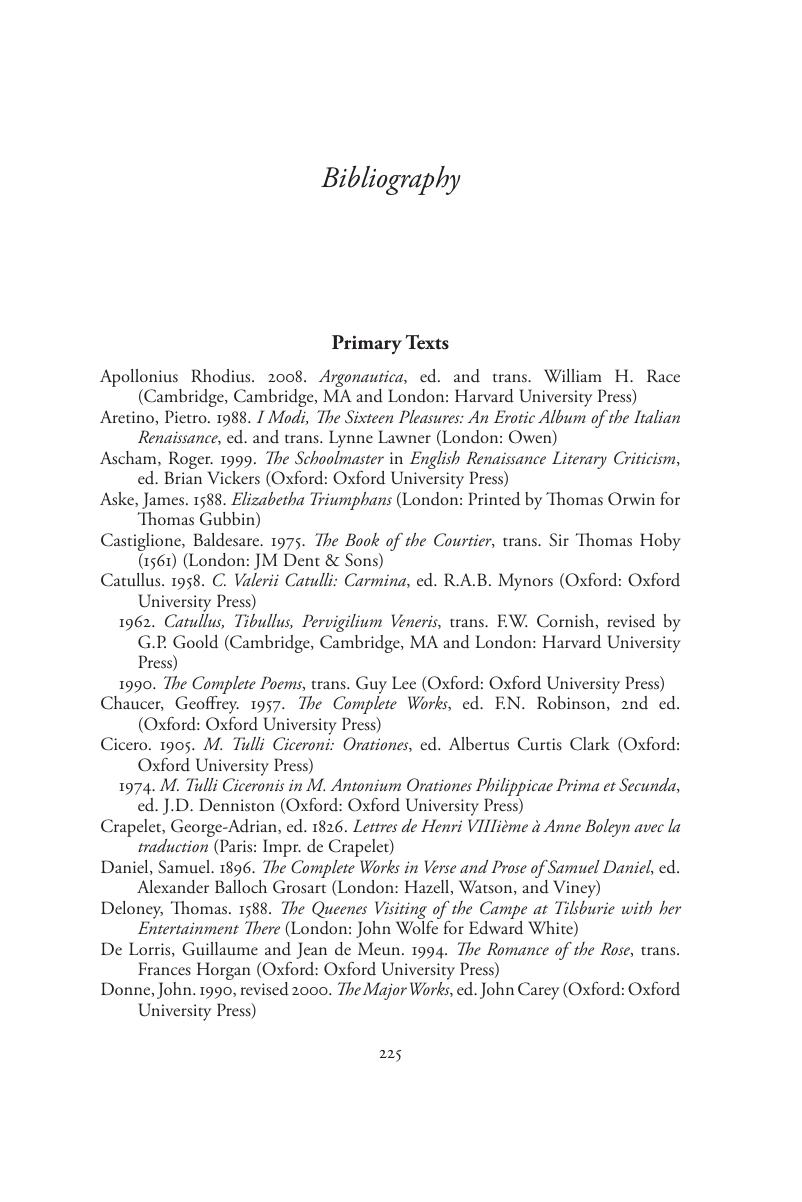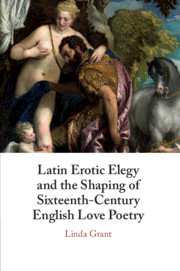Book contents
- Latin Erotic Elegy and the Shaping of Sixteenth-Century English Love Poetry
- Latin Erotic Elegy and the Shaping of Sixteenth-Century English Love Poetry
- Copyright page
- Contents
- Textual Note
- Introduction
- Chapter 1 ‘Ovid Was There and with Him Were Catullus, Propertius and Tibullus’
- Chapter 2 ‘For Truth and Faith in Her Is Laid Apart’
- Chapter 3 ‘“Fool,” Said My Muse to Me’
- Chapter 4 ‘In Six Numbers Let My Work Rise, and Subside in Five’
- Chapter 5 ‘My Heart … with Love Did Inly Burn’
- Conclusion
- Notes
- Bibliography
- Index
- References
Bibliography
Published online by Cambridge University Press: 19 August 2019
- Latin Erotic Elegy and the Shaping of Sixteenth-Century English Love Poetry
- Latin Erotic Elegy and the Shaping of Sixteenth-Century English Love Poetry
- Copyright page
- Contents
- Textual Note
- Introduction
- Chapter 1 ‘Ovid Was There and with Him Were Catullus, Propertius and Tibullus’
- Chapter 2 ‘For Truth and Faith in Her Is Laid Apart’
- Chapter 3 ‘“Fool,” Said My Muse to Me’
- Chapter 4 ‘In Six Numbers Let My Work Rise, and Subside in Five’
- Chapter 5 ‘My Heart … with Love Did Inly Burn’
- Conclusion
- Notes
- Bibliography
- Index
- References
Summary

- Type
- Chapter
- Information
- Latin Erotic Elegy and the Shaping of Sixteenth-Century English Love PoetryLascivious Poets, pp. 225 - 260Publisher: Cambridge University PressPrint publication year: 2019

